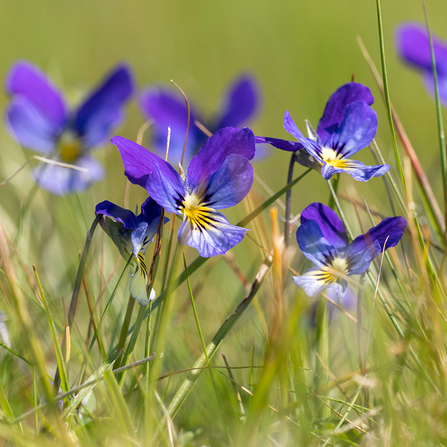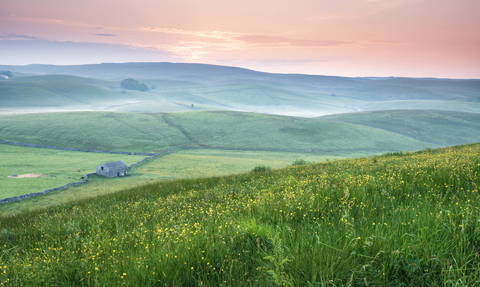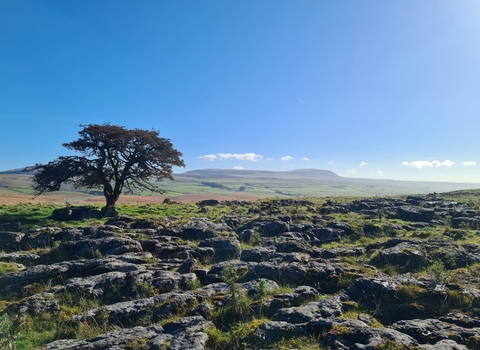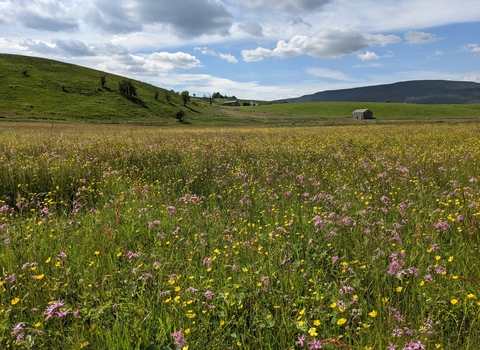
(C) Gary Cox


South House Pavement Nature Reserve
Location
Know before you go
Dogs
In wet and icy conditions the grykes can be slippery for both humans and dogs, please exercise caution and keep your dog on a short lead.
When to visit
Opening times
Open at all times. We recommend a 1 hour trip for this reserve, an extended outing might include a visit to our other Ingleborough reserves such as Brae Pasture which is just one mile away.Best time to visit
March to JuneAbout the reserve
Spectacular (but slippery when wet!) South House Pavement is an exciting destination for intrepid, sure-footed plant lovers who are happiest when searching for hidden wonders. The clints (blocks) and grykes (gaps) harbour highly diverse plant life, including meadowsweet and broad buckler fern. Pink hairy stonecrop grows near pools of water on the bare rock in summer, when you can also see rigid buckler fern. Rowan and harebells provide autumn colour, and hart’s-tongue fern stands out in winter.
Contact us

Mountain Pansies - (C) John Potter
New heights for nature
Ingleborough and its iconic foothills are the last stronghold for rare and threatened species that are found nowhere else in the world.
We must protect, restore and reconnect this iconic landscape today before these species are lost forever.
About
Surrounded by dry stone walls, typical in the Yorkshire Dales National Park, South House Pavement Nature Reserve is a fantastic example of a limestone pavement. A great site for the sure-footed, the mosaic of narrow clints (blocks) and grykes (fissures) provides a wide range of climatic and soil conditions, leading to high botanical diversity. It does mean however that it can be rather difficult to venture across, particularly in wet weather when it is best avoided.
The pavement fissures support plants including meadowsweet, broad buckler fern and hart’s tongue fern. The depressions in the limestone pavement allows the development of thicker, damp soil which support heather, while pink hairy stonecrop grows near pools of water on the bare rock.
Spring is the best time to see blue moor grass in flower, which is a nationally scarce species. It is when wheatear and meadow pipit also start to sing on site.
In summer species of interest within the pavement include ridgig buckler fern and hairy stonecrop. In autumn rowan and harebells provide some late season colour. In winter harts-tongue fern stands out as many of the other species have died back for the winter.
Seasonal highlights
- Spring: Birds - Meadow pipit; Wheatear; Willow Warbler; Plants - Blue moor-grass; Water avens, Invertebrates - Orange tips
- Summer: Plants - Rigid buckler fern; Hairy stonecrop
- Autumn: Plants - Rowan; Harebell
- Winter: Plants - Hart's-tongue
History
Features of historical interest include the eastern stone wall of the reserve which is likely to be of medieval in origin, and formed part of the Furness Abbey Selseth (Selside) vaccary (cattle estate). A (possibly medieval) sunken track was cut through the central part of South House Pavement to give access from the enclosures to the then open Fell Close. This is now a footpath through the site.
South House Pavement was once grazed, the rocky areas cleared in previous centuries. However the grykes in the pavement make it a dangerous site for livestock and there is no water supply. Management is now focussed on maintaining the dry stone walls and occasionally removing sycamore seedlings and rosebay willowherb which would otherwise grow and shade out the rich ground flora. The land here is part of the Ingleborough National Nature Reserve.
Directions
Public transport
Train (Settle-Carlisle line) station and occasional buses at Horton-in-Ribblesdale 2.5 miles away.
By car
Take the B6479 Horton to Selside Road and turn off for South House. The nature reserve lies beyond South House on the lower slopes of Simon Fell, east of Ingleborough Hill. There is limited roadside parking. Enter the nature reserve by a small gate in the wall.

Ashes Pasture - (C) John Potter



